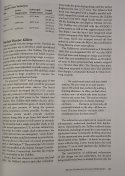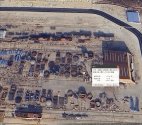Nah, looks like it's from that submarine movie that came out this year, Operation Hadal, third installment of a Chinese military movie series.Inside 096? Looks different than older subs.
You are using an out of date browser. It may not display this or other websites correctly.
You should upgrade or use an alternative browser.
You should upgrade or use an alternative browser.
09V/09VI (095/096) Nuclear Submarine Thread
- Thread starter Hendrik_2000
- Start date
Lethe
Captain
Slight correction - The Rubis and Suffren SSNs are using turbo-electric propulsion systems as well, not just the Triomphant (and future Columbia) SSBNs.
In that case, the 095 SSN should become the 1st in China (and 3rd worldwide) to have turbo-electric propulsion system on serial-production SSNs.
I recall reading about an experimental nuclear turbo-electric submarines in US Navy service. From Norman Polmar and K. J. Moore's Cold War Submarines, the submarine I was thinking of was USS Glenard P. Lipscomb (SSN-685). But that vessel's nuclear turbo-electric predecessor, USS Tullibee (SSN-597), is intriguing from another perspective also, in that its size, performance and concept of operations resemble those of another PLAN project of interest.

I recall reading about an experimental nuclear turbo-electric submarines in US Navy service. From Norman Polmar and K. J. Moore's Cold War Submarines, the submarine I was thinking of was USS Glenard P. Lipscomb (SSN-685). But that vessel's nuclear turbo-electric predecessor, USS Tullibee (SSN-597), is intriguing from another perspective also, in that its size, performance and concept of operations resemble those of another PLAN project of interest.
View attachment 162932
It certainly would double the fun and surprise if that another PLAN project of interest utilizes turbo-electric propulsion system as well.
Lethe
Captain
It certainly would double the fun and surprise if that another PLAN project of interest utilizes turbo-electric propulsion system as well.
Reading in concert with Norman Friedman's U.S. Submarines Since 1945, it seems the main problem with Tullibee was size and cost growth beyond expectations eroding the value proposition relative to full-blown SSNs. This growth appears to have originated with the reactor itself. The economics of SSKN construction and operation relative to both SSKs and SSNs will undoubtedly be a key factor in the success or otherwise of PLAN's effort also.
The aforementioned book has some more details about Admiral Rickover's advocacy for turbo-electric drive on nuclear submarines and the difficulties encountered:
Tullibee could use the turbo-electric approach because her single shaft ran at about the same power as those of existing direct-drive diesel-electric submarines. Initially, it was assumed that a scaled-up equivalent would be installed in the new attack submarine (Thresher) [....] The 15,000 SHP of a fast submarine, however, was a different proposition from Tullibee's 2,500-SHP plant. A slow-turning electric motor that was large enough did not exist [....] rafted, geared turbines were formally chosen in April 1957 as the lightest, most compact arrangement -- and also requiring the least additional development (p.142)
Admiral Rickover disliked rafted geared turbines; at best they were a brute force solution to the gear noise problem. At worst that solution could fail because of some minor imperfection. In 1964, OpNav made one of its periodic attempts to obtain a less expensive SSN. Tullibee had been far too expensive for mass production, but she was also much less expensive than a production Sturgeon. OpNav asked whether a somewhat more capable version could be produced.
Rickover saw the request as a chance to reopen the silencing question. He began work on a turboelectric version of the Sturgeon powerplant. Tullibee's big DC motor would be simply scaled up by a factor of six. A big AC motor would have been much smaller and would have presented fewer design problems, but DC was conceptually simpler. A submarine so powered could easily back down by reversing polarity. That might be rather important for her safety in an unintended dive. Too, a big DC motor could be run very quietly off the submarine's battery, with the reactor turned off altogether. To do this with an AC motor and turbogenerator would require extra equipment, such as an inverter to turn AC current into DC and vice versa. Rickover personally rejected this complication.
As it turned out, the theoretical simplicity of the DC plant masked some terrible practical problems, such as the sheer size of the bus bars needed to carry its current. Quite soon, it also became clear that the DC turbo-electric plant would be massive; the submarine would have to be considerably larger than a standard Sturgeon. Some in BuShips tried to hold down the size by offering an S3W-powered turbo-electric submarine. Rickover rejected it.
[....] The turbo-electric drive submarine (TEDS) was tentatively included in the FY 67 budget, but OSD rejected it as too expensive and unsuited for series production. Rickover objected vigorously. He justified TEDS as a test bed for future silencing techniques on the ground that eliminating the loudest source of noise altogether (gear whine) would make it much easier to test for other sources. After a brutal fight, a TEDS, Glenard P. Lipscomb (SSN-685) was included in the FY 68 budget. The extent to which she was conceived as a straightforward machinery replacement in a Sturgeon hull shows in the fact that she was not allocated a separate SCB number during her design phase. The TEDS did not turn out particularly well. The turbo-electric machinery was unreliable and inherently less efficient than geared turbines. Because she was also considerably larger than Sturgeon, Lipscomb was also much slower. She operated very little after Rickover retired in 1981 and was stricken in 1989 after only 15 years of service. The TEDS fight did make OSD more wary of attacking Admiral Rickover; as a result, TEDS deeply influenced the later decision in favor of Los Angeles (pp. 147-149).
Makes one wonder about the French experience with their Rubis SSNs. Those boats are similar in size to Tullibee, but with three times the shaft horsepower.
Last edited:
The data on the Sea Wolf-class is inaccurate. After the second decade of the 21st century, various sources have revised the power to 45,000 shp or 33 MW.Yasen displacement:
Surfaced: 8,600 tons
Submerged: 13,800 ton
Not sure we're expecting 095 to be that big? Maybe Seawolf sized ~9kt submerged. Of course single vs double hull has a big effect on displacement.
Seawolf:
1 S6W PWR 220 MW (300,000 hp), HEU 93.5%
1 secondary propulsion submerged motor
2 steam turbines 57,000 shp (43 MW)
1 shaft
1 pump-jet propeller
Of course 2 x 38MW would put 095 in a class of its own.
Do you have a reputable source on this?The data on the Sea Wolf-class is inaccurate. After the second decade of the 21st century, various sources have revised the power to 45,000 shp or 33 MW.
Strangely enough, all the 095 modules seen so far seems to be the VLS section.
I don't think we've seen that many confirmed 09V modules... nor do we know if any of them are even actual proper modules intended for the submarine itself (rather than say, a past demonstration module or even the same module being moved around)


